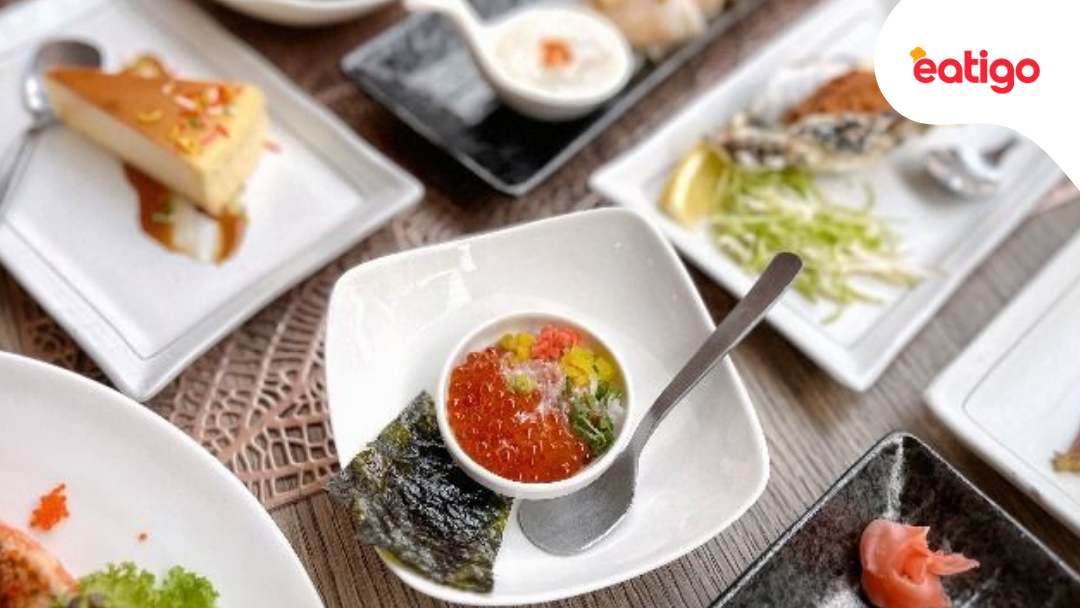What is omakase? Explained by master

15 Classic Korean food – enjoy specialities dishes
September 30, 2024
What is ramen? – The best ramen in Kuala Lumpur
October 1, 2024Welcome to our in-depth exploration of omakase, a unique dining experience that places the culinary journey in the hands of the chef! Omakase, which means “I leave it up to you” in Japanese Food, allows diners to savor a carefully curated selection of dishes that showcase the freshest ingredients and the chef’s creativity.
What is omakase?
sushi restaurants, omakase meals can include a variety of dishes, from sashimi and sushi to grilled items and other seasonal specialties. The experience is often interactive, as chefs may explain each dish as they serve it, making it both a feast for the palate and an educational journey.
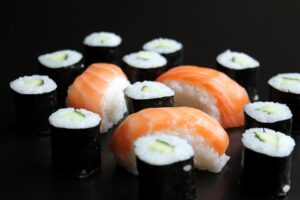
The omakase experience
The omakase experience is a unique and immersive dining concept rooted in Japanese culinary tradition. “Omakase” translates to “I’ll leave it up to you,” indicating that diners trust the chef to create a multi-course meal based on seasonal ingredients and the chef’s expertise. Here’s a deeper look at what to expect from an omakase experience:
Variety of Dishes
An omakase meal typically consists of multiple courses, which may include sashimi, sushi, grilled items, and unique creations, providing a comprehensive taste of Japanese cuisine.
Type of sushi
These various types of sushi offer a wide range of flavors, textures, and experiences, making sushi a versatile and beloved cuisine around the world. Whether you prefer raw fish or cooked ingredients, there’s something for everyone to enjoy!
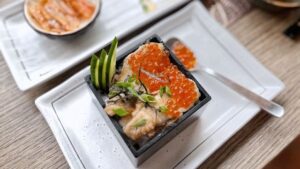
1.Nigiri
Nigiri is a popular style of sushi that consists of hand-formed mounds of vinegared sushi rice topped with slices of fish or seafood. A hand-formed mound of sushi rice topped with a slice of fish or seafood.Common Toppings: Tuna (maguro), salmon (sake), and eel (unagi).
2.Sashimi
Sashimi is a traditional Japanese dish consisting of Thinly sliced raw fish or seafood, served without rice. Common Types: Salmon, tuna, yellowtail, and octopus.
- Tuna Sashimi: A favorite among sushi lovers, often varying in fat content (e.g., akami, chutoro, otoro).
- Salmon Sashimi: Rich and buttery in flavor.
- Octopus Sashimi: Slightly chewy and often blanched for tenderness.
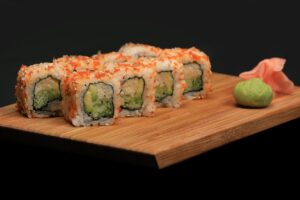
3.Maki
Maki is a type of sushi that consists of rice and various fillings wrapped in seaweed (nori). It’s one of the most recognizable forms of sushi and comes in several variations. Rolled sushi, consisting of rice and fillings wrapped in seaweed (nori).
- Hosomaki: Small rolls with a single filling.
- Uramaki: Inside-out rolls with rice on the outside and fillings on the inside.
- Futomaki: Thick rolls with multiple ingredients.
4.Temaki
Temaki is a type of sushi that is characterized by its hand-rolled, cone-shaped structure. Hand-rolled sushi cones made of nori filled with rice and various ingredients. Common Fillings Fish, avocado, cucumber, and other vegetables.
5.Chirashi
Chirashi is a traditional Japanese dish that translates to “scattered” sushi. It typically consists of a bowl of sushi rice topped with a variety of sashimi and other ingredients. A bowl of sushi rice topped with a variety of sashimi and garnishes. Ingredients: Seasonal fish, vegetables, and sometimes garnishes like sesame seeds or pickled ginger.
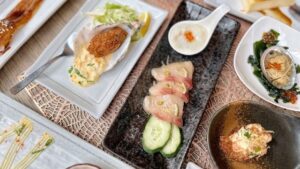
6.Inari
Inari is a type of sushi that consists of sushi rice encased in a pocket of sweet and marinated tofu skin, known as inari age Sushi rice wrapped in a sweet, marinated tofu pouch (inari age). Common Toppings: Often served plain or with added vegetables.
7.Gunkan
Gunkan is a style of sushi characterized by its small, oval shape, where a mound of sushi rice is wrapped in a strip of nori (seaweed) to create a vessel for various toppings. “Battleship sushi,” where a small oval of rice is wrapped in nori and topped with soft ingredients. Common Toppings: Fish roe (ikura), sea urchin (uni), or chopped seafood.
8.Oshi Sushi
Oshi Sushi is a traditional Japanese sushi style that is characterized by its pressed format. The term “oshi” means “to press,” which reflects the method used to create this unique sushi. Pressed sushi, formed by layering sushi rice and toppings in a mold. Common Toppings: Usually features marinated fish or other ingredients.
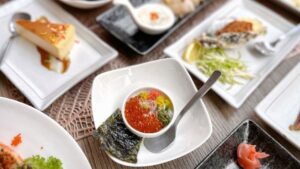
9.Narezushi
Narezushi is a traditional form of sushi that dates back several centuries and is one of the oldest methods of preserving fish in Japan.Traditional fermented sushi made with fish and rice, often aged for months.Narezushi is made by fermenting fish with rice, which acts as a preservative. The fish is typically wrapped in rice and left to ferment for a period of time, often several months. Common Types: Commonly includes mackerel or other fish.
Summary
Welcome to our comprehensive look at omakase, a distinctive dining experience where the chef guides your culinary journey! Omakase, translating to “I leave it up to you” in Japanese, lets diners enjoy a thoughtfully curated array of dishes featuring the freshest ingredients and the chef’s artistic flair.

